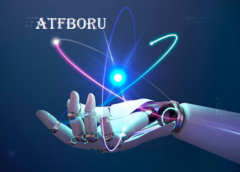In a rapidly evolving digital era where AI, automation, and decentralized systems are converging, the term Cñims is emerging as both a visionary concept and a future-ready architecture. Whether seen as a symbolic construct or a practical framework, Cñims—interpreted as Cognitive Neural-Integrated Modular Systems—represents a new paradigm in how intelligence can be embedded across systems, technologies, and even social structures.
This blog dives deep into what Cñims is, its foundational structure, potential applications, philosophical roots, and implications across industries. We’ll also explore how Cñims is already shaping conversations in AI research, system design, and cognitive simulation.
Understanding the Essence of Cñims
Cñims is not just another acronym in a sea of tech buzzwords. It symbolizes a powerful, multidimensional approach to designing systems that mirror human cognition, modularity, and adaptability. At its heart, Cñims merges elements of cognitive psychology, neuroscience, system theory, and modern computing.
While traditional systems focus on linear data processing or siloed logic, Cñims thrives on integration, decentralization, and intelligent feedback loops. It’s not just a “system” but a blueprint for building systems that think, learn, and evolve.
Core Characteristics of Cñims
Let’s unpack the essential features that define the Cñims architecture.
Cognitive Adaptability
Unlike traditional AI models, which depend heavily on pre-training and static rules, Cñims emphasizes adaptability. These systems learn from their environment, reshape their responses over time, and adjust their pathways based on contextual input.
Neural Parallelism
Inspired by the human brain, Cñims systems utilize parallel processing units or digital neurons that operate in tandem. This allows for fast, multi-threaded decisions that simulate complex cognitive behavior.
Modular System Design
The modularity of Cñims enables developers to build scalable, replaceable, and independently functioning units. Each module can be updated or reprogrammed without altering the entire system, making it suitable for dynamic environments.
Self-Organization
Cñims can restructure itself in response to external feedback. It uses internal heuristics and performance data to optimize its internal structure, essentially learning how to be better at learning.
Synthetic-Organic Interface
The future of Cñims may not be confined to silicon. The architecture supports bio-digital interfaces, enabling two-way communication between human biology and synthetic intelligence. From neural implants to plant-monitoring interfaces, the possibilities are expanding.
A Comparative Look at Cñims vs Traditional Systems
| Feature | Traditional Systems | Cñims Architecture |
|---|---|---|
| Data Processing | Batch or linear | Real-time, contextual |
| Learning Capability | Predefined logic | Self-learning, adaptive |
| System Design | Monolithic | Modular and scalable |
| Human Integration | Limited | Bi-directional interfaces |
| Decision-Making | Rule-based | Neural-symbolic reasoning |
| Autonomy | Low to moderate | High (with ethical oversight) |
| Flexibility | Rigid configurations | Dynamic restructuring |
Philosophical and Scientific Roots of Cñims
The conceptual foundation of Cñims can be traced to several interdisciplinary fields. From systems theory and cybernetics to Vedic and Taoist philosophy, the idea of distributed intelligence or emergent behavior has always fascinated thinkers.
In the 20th century, theorists like Norbert Wiener (cybernetics), Humberto Maturana (autopoiesis), and Heinz von Foerster (second-order cybernetics) laid the groundwork for systems that learn and evolve through feedback. Cñims builds upon these legacies and applies them to the digital realm, creating systems that are more than the sum of their parts.
Practical Applications of Cñims
Though the term may feel abstract, Cñims is already influencing innovations across a variety of industries.
Smart Manufacturing
Factories using Cñims-based platforms can coordinate between machines, predict maintenance, and adapt workflows based on demand—all autonomously. These “Industry 4.0” settings leverage IoT, machine vision, and AI working in harmony.
Healthcare Systems
Hospitals are piloting adaptive systems that assign ICU beds, track medication inventory, and predict patient inflow using real-time sensor data and predictive modeling rooted in the Cñims framework.
Environmental Monitoring
Cñims-enhanced environmental grids use drones, sensors, and edge-AI to track climate anomalies, water pollution, and biodiversity threats, providing predictive insights for governments and NGOs.
Personalized Learning Environments
In education, Cñims-powered platforms can detect a learner’s pace, mood, and comprehension level. They adapt the curriculum dynamically, ensuring students stay engaged and supported at all times.
Decentralized Finance (DeFi)
In fintech, Cñims helps create transparent, AI-monitored systems that can detect fraud, assess credit risk, and adjust investment portfolios in real-time, all without manual oversight.

Technological Infrastructure Behind Cñims
Cñims is not built on one technology stack but a convergence of several cutting-edge domains:
- AI and Machine Learning: TensorFlow, PyTorch, Hugging Face models for contextual learning and pattern recognition.
- Data Flow Systems: Apache Kafka, Snowflake, and real-time data lakes for continuous ingestion and analytics.
- Edge Computing: 5G-connected GPUs, NVIDIA Jetson boards, and custom ASICs to enable local decision-making.
- Cloud Architecture: AWS, Azure, and hybrid models for global scalability and redundancy.
- Security Frameworks: Blockchain-backed logs, quantum-ready encryption, and biometric access layers.
- Human Interface Modules: AR/VR dashboards, haptic devices, and eventually even neural lace or brain-computer interfaces.
Ethical and Implementation Challenges
Despite its promise, the development of Cñims is not without significant ethical and logistical hurdles.
Data Governance
Cñims systems depend on vast amounts of data. Handling this data responsibly—especially in light of GDPR, HIPAA, and India’s DPDP—is non-negotiable. Data anonymization, user consent, and secure storage are critical concerns.
Algorithmic Bias
Bias in data can translate to biased decisions. The modular, decentralized nature of Cñims makes it both easier and harder to spot these issues—easier because of transparency, harder because of complexity.
Legacy System Compatibility
Organizations looking to adopt Cñims often need to overhaul or integrate with outdated systems, which can slow deployment and increase costs.
Human-Machine Ethics
Cñims brings autonomy into the spotlight. As systems start making high-stakes decisions, who is held responsible? What safeguards exist to prevent runaway algorithms or unintended consequences?
The Future Path of Cñims
Looking ahead, several trends point to how Cñims could evolve:
Cognitive Cloud Sharing
Imagine uploading not just files, but cognitive modules—algorithms trained on specific skills or behaviors—that others can integrate into their systems. This would democratize intelligence like never before.
Synthetic Organism Interfacing
Future Cñims systems might not just interact with humans but could support mutual communication with plants, animals, or microbial colonies, creating a new layer of environmental synergy.
Emotionally Responsive Systems
By integrating affective computing, Cñims could detect and respond to emotional states, making machines more empathetic collaborators in both personal and professional settings.
Urban Cñims Ecosystems
Cities embedded with Cñims infrastructure could regulate traffic, waste, water, and public safety systems dynamically, becoming adaptive urban organisms.
Quantum-AI Integration
By merging quantum processing with Cñims architecture, future systems could solve optimization problems at previously impossible speeds, opening new frontiers in drug discovery, logistics, and climate modeling.
Conclusion
Cñims is more than just an abstract framework or futuristic vision. It represents a fundamental shift in how we design, interact with, and rely on intelligent systems. By combining cognitive adaptability, modular architecture, and decentralized control, Cñims offers a new way of organizing intelligence—one that reflects both human-like reasoning and system-level resilience.
In a world where businesses, governments, and individuals must continuously evolve, Cñims provides the blueprint for systems that don’t just process information—they understand, learn, adapt, and even care. It is the invisible architecture behind tomorrow’s intelligent, ethical, and collaborative world.
Awakening: Through Antarvafna: A Path Within
FAQs
What does Cñims stand for or represent?
Cñims can be interpreted as Cognitive Neural-Integrated Modular Systems, a framework that blends cognitive science and modular engineering to create adaptive, intelligent systems that evolve.
How is Cñims different from conventional AI frameworks?
Cñims is modular, self-organizing, and context-aware. Unlike traditional AI systems that rely on static algorithms, Cñims adapts dynamically and mimics human-like decision-making through neural parallelism and decentralized intelligence.
Can Cñims be used outside of technology and enterprise systems?
Yes, Cñims principles extend into healthcare, education, climate science, and even cognitive therapy. Any domain requiring responsive, intelligent, and scalable systems can benefit from its methodology.
Are there ethical risks in deploying Cñims-based systems?
Certainly. Issues like bias, transparency, accountability, and data sovereignty remain critical. Ethical oversight and governance frameworks must evolve alongside the technology to mitigate these risks.
Is Cñims a real product or just a theoretical idea?
While the term Cñims may be symbolic or conceptual, the technologies and methodologies it represents are very real and already in deployment. It’s not a single product, but a guiding architecture for next-gen intelligent systems.



